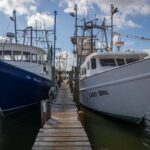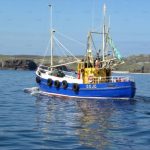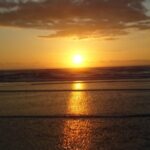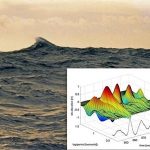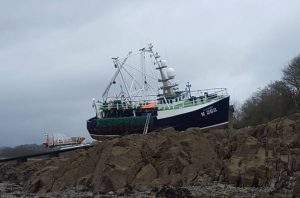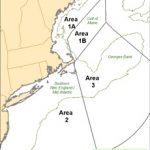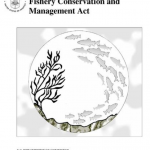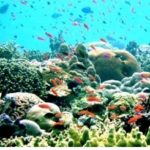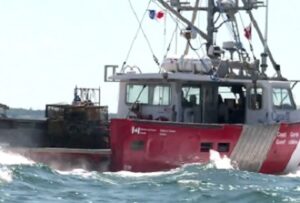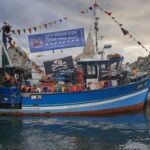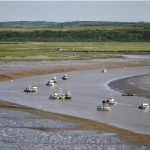Monthly Archives: April 2017
Coast Guard investigation into the death of commercial fisherman Walter Krupinski continues
 The $300 in fines assessed to the captain of a 60-foot yacht that collided with Walter Krupinski’s 23-foot boat doesn’t sit well with Krupinski’s widow Peggy. “These $100 fines just don’t cut it with me. My husband died,” Krupinski said. “Hopefully the Coast Guard or the Justice Department can do something more.” Cooper Bacon, 76, of New Jersey was found guilty March 27 of violating three Coast Guard navigation rules resulting in the Sept. 22, 2015, death of Krupinski, 81. Bacon is licensed as a captain by the U.S. Coast Guard. Each of the violations — improper navigation or failure to have a lookout, failure to take action to avoid a collision and improper overtaking of another vessel — carries a maximum $100 fine. Dawn Hallen, chief of the U.S. Coast Guard Investigations Division, attended Bacon’s four-day trial. She said her division’s investigation into the collision is not done yet and Bacon has refused to speak with Coast Guard officials, which has made the process lengthy and more difficult. click here to read the story 07:45
The $300 in fines assessed to the captain of a 60-foot yacht that collided with Walter Krupinski’s 23-foot boat doesn’t sit well with Krupinski’s widow Peggy. “These $100 fines just don’t cut it with me. My husband died,” Krupinski said. “Hopefully the Coast Guard or the Justice Department can do something more.” Cooper Bacon, 76, of New Jersey was found guilty March 27 of violating three Coast Guard navigation rules resulting in the Sept. 22, 2015, death of Krupinski, 81. Bacon is licensed as a captain by the U.S. Coast Guard. Each of the violations — improper navigation or failure to have a lookout, failure to take action to avoid a collision and improper overtaking of another vessel — carries a maximum $100 fine. Dawn Hallen, chief of the U.S. Coast Guard Investigations Division, attended Bacon’s four-day trial. She said her division’s investigation into the collision is not done yet and Bacon has refused to speak with Coast Guard officials, which has made the process lengthy and more difficult. click here to read the story 07:45
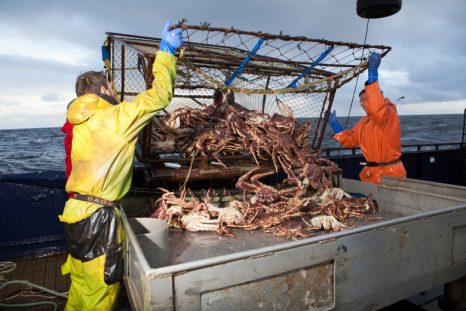
‘Deadliest Catch’ Faces Its Own Extinction – The crabs are missing in the Bering Sea, and the series may soon have nothing to film.
If Discovery’s “Deadliest Catch” is in trouble, it’s climate change – not ratings – that may hasten the show’s demise. Over the last year, temperatures rose about four degrees in the Bering Sea, which is 50 times the global average. As filming began for the 13th season of “Deadliest Catch,” which premieres Tuesday night, the show’s fishermen had to contend with a serious problem: With warming waters, the crabs have moved elsewhere. “The first thing that you need in order to film a show about crab fishing are the crabs,” said executive producer R. Decker Watson, Jr. “If the crabs don’t show up, then we’re all out of business.” The Alaska Department of Fish and Game sets an annual quota system on crab fishing, depending on a survey they take in the spring and summer. This past year, they found that half the crab was missing, and quotas were cut across the board.“We didn’t know if we were even going to be on the water long enough to film the 20 hours of ‘Deadliest Catch’ for the season,” Watson said. “It became a much more difficult fight for each skipper… It worries me for the future of the fishermen, they’re really having to fight to save their way of life. But it makes for great television.” Indeed, the fishermen’s struggle became a major part of the story this season. click here to read the story 20:03
Pacific sardine fishery closed for the third year in a row
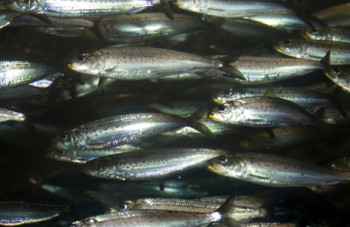 The Pacific Fishery Management Council on April 10 announced the continued closure of the Pacific sardine directed fishery through June 30, 2018. This is the third annual closure in a row for this fishery. Council members heard from scientists that the abundance forecast for the 2017-18 season, scheduled to start July 1, was significantly below the 150,000 metric ton threshold for a directed fishery. They also considered testimony from fishery participants and environmental groups before reaching a decision to close the directed fishery. click here to read the story 19:33
The Pacific Fishery Management Council on April 10 announced the continued closure of the Pacific sardine directed fishery through June 30, 2018. This is the third annual closure in a row for this fishery. Council members heard from scientists that the abundance forecast for the 2017-18 season, scheduled to start July 1, was significantly below the 150,000 metric ton threshold for a directed fishery. They also considered testimony from fishery participants and environmental groups before reaching a decision to close the directed fishery. click here to read the story 19:33
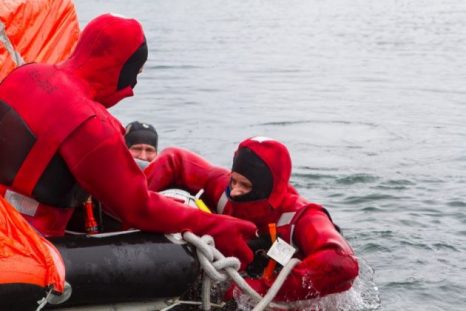
Reality check – As they gear up for the season, Island fishermen receive two days of safety and survival training.
Don’t put the injured on the raft first, they can slow down the evacuation. Don’t stow survival suits below decks. Don’t leave port without a Nerf football. This was some of the wisdom imparted to a group of 35 commercial fishermen gathered at Coast Guard Station Menemsha on a gray, windy Thursday morning, where, appropriately, a storm front was bearing down on the Vineyard. It was day one of two training days for commercial fishermen — along with sailors, harbormasters, and shellfish constables — provided by Burlington-based Fishing Partnership Support Services (FPSS). The focus of the day one was safety and survival. Participants rotated among six training modules: man overboard procedure, firefighting and flares, survival suits, helicopter hoist operations, flooding and pump operations, first aid and CPR, and life raft equipment. seven images, click here to read the story 16:19
Fundy fishermen lose bid to stop tidal turbine in Minas Basin
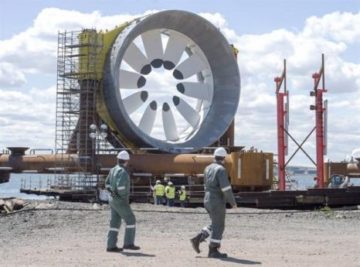 A group of Bay of Fundy fishermen have lost a bid to overturn the approval of a project in Nova Scotia’s Minas Basin. In February, the Bay of Fundy Inshore Fishermen’s Association argued in Nova Scotia Supreme Court that the province’s environment minister granted approval of the project without enough environmental data. The group, which represents 175 fishermen from Yarmouth to the New Brunswick border, says it believes the tidal energy program will harm marine life. The first turbine was deployed in November. In particular, the group has accused the operators of the turbine of failing to produce “relevant baseline data,” or a snapshot of the environmental state of the Bay of Fundy before the turbine was deployed. On Monday, Justice Heather Robertson rejected the claims by the fishermen, saying “extraordinary efforts have been made to evaluate risk” in the 2009 environmental assessment of the turbine project. click here to read the story 15:37
A group of Bay of Fundy fishermen have lost a bid to overturn the approval of a project in Nova Scotia’s Minas Basin. In February, the Bay of Fundy Inshore Fishermen’s Association argued in Nova Scotia Supreme Court that the province’s environment minister granted approval of the project without enough environmental data. The group, which represents 175 fishermen from Yarmouth to the New Brunswick border, says it believes the tidal energy program will harm marine life. The first turbine was deployed in November. In particular, the group has accused the operators of the turbine of failing to produce “relevant baseline data,” or a snapshot of the environmental state of the Bay of Fundy before the turbine was deployed. On Monday, Justice Heather Robertson rejected the claims by the fishermen, saying “extraordinary efforts have been made to evaluate risk” in the 2009 environmental assessment of the turbine project. click here to read the story 15:37
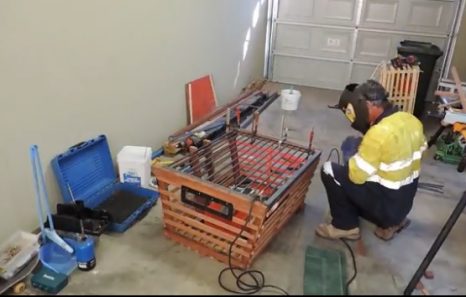
How To Build Your Own Craypot (Lobster Pot) Perth WA
DIY how to build your own craypot (lobster pot) for catching your own West Australian Rock Lobster (Crayfish) We catch them from the North side to the West end of Rotto in 30m of water in the Indian Ocean. We also catch them behind Three Mile Reef in 30m of water. We normally leave Hillarys Boat Harbour to check our pots. We sometimes put our pots behind Five Fathom Bank in 30m of water. We normally use tuna heads, mackerel, sanmar and mullet for our bait for our craypots. They have an interesting way to retrieve them too! Watch the video here 14:54
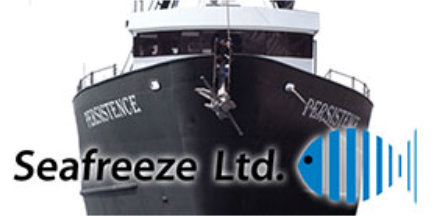
Always Top Quality! Your Seafreeze Ltd. Preferred Price List for April 2017 Has Arrived!
Contact our sales team today @ 401 295 2585 or 800 732 273 Click here for the complete price list from Seafreeze Ltd. – We are Direct to the Source-We are Fishermen-We are Seafreeze Ltd! Visit our website! 12:54
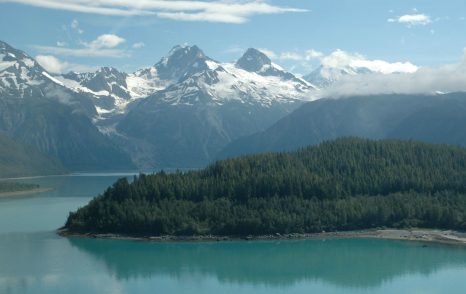
Where Is America’s Next War? Alaska. And the enemy is not who you’d expect.
It’s war in the Gulf and the US Navy is on hand to protect us. No, not that Gulf! I’m talking about the Gulf of Alaska and it’s actually mock war — if, that is, you don’t happen to be a fin whale or a wild salmon. This May, the Navy will again sail its warships into the Gulf of Alaska. There, they will engage in military maneuvers and possibly drop bombs, launch torpedoes and missiles, and engage in activities that stand a significant chance of poisoning those once-pristine waters, while it prepares for future battles elsewhere on the planet. Think of it as a war against wildlife, an assault on the environment and local coastal communities. click here to continue reading the article 11:57
Mid-Atlantic Fishery Management Council Meeting in Avalon, New Jersey: April 11-13, 2017
The public is invited to attend the Mid-Atlantic Fishery Management Council’s April 2017 meeting to be held April 11-13, 2017 in Avalon, New Jersey. The meeting will be held at the Icona Golden Inn, 7849 Dune Dr., Avalon, NJ, Telephone 609-368-5155. Briefing documents will be posted as they become available (click here). For online access to the meeting, enter as a guest (click here) This link is now active! 09:56
Being Pushed Out: Offshore wind farms add to woes of Dutch fishing fleet
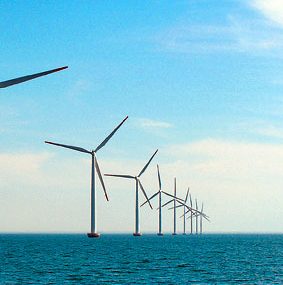 Plans to extend the number Dutch offshore wind farms are adding to the problems faced by the Dutch North Sea fishing fleet, said the Financieele Dagblad on Monday. Proposals presented last Friday call for offshore wind farm capacity of 4,450 megawatts to be added until 2031, with capacity hiked to 10,000 megawatts by 2030. The wind farms would cover several thousand square kilometres in the North Sea. But with the major shipping lanes, large nature reserves, sand-mining areas and other areas off limits to the fisheries industry, Dutch fishing waters are being compromised. And with Brexit, British fishing grounds may be closed to Dutch fishing vessels, further adding to the problems, the paper said. link 08:41
Plans to extend the number Dutch offshore wind farms are adding to the problems faced by the Dutch North Sea fishing fleet, said the Financieele Dagblad on Monday. Proposals presented last Friday call for offshore wind farm capacity of 4,450 megawatts to be added until 2031, with capacity hiked to 10,000 megawatts by 2030. The wind farms would cover several thousand square kilometres in the North Sea. But with the major shipping lanes, large nature reserves, sand-mining areas and other areas off limits to the fisheries industry, Dutch fishing waters are being compromised. And with Brexit, British fishing grounds may be closed to Dutch fishing vessels, further adding to the problems, the paper said. link 08:41
A Message from John Bullard – Looking Forward to Looking Back: Electronic Monitoring in New England Groundfish
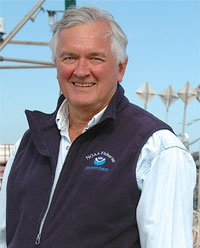 Electronic monitoring (EM) is being used for catch monitoring and reporting compliance in fisheries worldwide, but use in the Northeast has been somewhat limited. There are always challenges with ensuring the accuracy of self-reported fisheries catch data, but EM represents a new suite of tools to improve reporting accuracy and increase catch monitoring. If we want to provide scientists with the best information possible and manage our fisheries sustainably, then we need to consider all of the tools in the toolbox. click here to read the story 07:27 (The tool box is full of monkey wrenches and ball peen hammers)
Electronic monitoring (EM) is being used for catch monitoring and reporting compliance in fisheries worldwide, but use in the Northeast has been somewhat limited. There are always challenges with ensuring the accuracy of self-reported fisheries catch data, but EM represents a new suite of tools to improve reporting accuracy and increase catch monitoring. If we want to provide scientists with the best information possible and manage our fisheries sustainably, then we need to consider all of the tools in the toolbox. click here to read the story 07:27 (The tool box is full of monkey wrenches and ball peen hammers)
NJ asks feds to drop limits on summer flounder
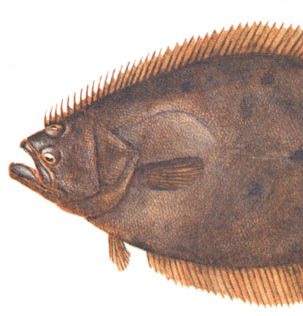 With their rows of sharp buck teeth, their downturned mouths, and both eyes on one side of their curiously flat bodies, summer flounder might seem beautiful only to one another. But this delicately flavored flatfish is the pinup girl, the heart’s desire, of thousands of New Jersey’s recreational fishermen — and has long been the source of many millions of dollars in tourism revenue each summer. For that reason the state has petitioned a federal commission to reverse its new restrictions on catching summer flounder in state waters in 2017. click to continue reading the story 07:06
With their rows of sharp buck teeth, their downturned mouths, and both eyes on one side of their curiously flat bodies, summer flounder might seem beautiful only to one another. But this delicately flavored flatfish is the pinup girl, the heart’s desire, of thousands of New Jersey’s recreational fishermen — and has long been the source of many millions of dollars in tourism revenue each summer. For that reason the state has petitioned a federal commission to reverse its new restrictions on catching summer flounder in state waters in 2017. click to continue reading the story 07:06
The Washington fishing-industry battle over a federal council seat escalates
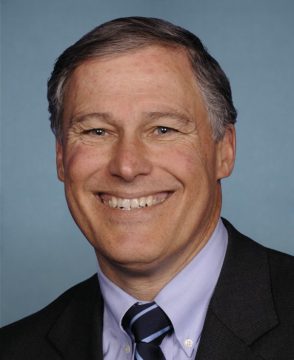 The Washington fishing-industry battle over a seat on the North Pacific Fishery Management Council has escalated as four industry groups sent a Thursday letter to Secretary of Commerce Wilbur Ross in support of Gov. Jay Inslee and his slate of three nominees. Leaders of the Freezer Longliner Coaltion, Alaska Bering Sea Crabbers, Deep Sea Fishermen’s Union and Fishing Vessel Owners Assocation all signed the letter. They sought to rebut an April 3 letter that President Donald Trump’s commerce secretary received from four other Washington industry groups that asked Ross to reject Inslee’s nominees because of what they said was a flawed nomination process. “We wish to register our strong disagreement with the April 3 letter,” they wrote. click here to read the story 20:11
The Washington fishing-industry battle over a seat on the North Pacific Fishery Management Council has escalated as four industry groups sent a Thursday letter to Secretary of Commerce Wilbur Ross in support of Gov. Jay Inslee and his slate of three nominees. Leaders of the Freezer Longliner Coaltion, Alaska Bering Sea Crabbers, Deep Sea Fishermen’s Union and Fishing Vessel Owners Assocation all signed the letter. They sought to rebut an April 3 letter that President Donald Trump’s commerce secretary received from four other Washington industry groups that asked Ross to reject Inslee’s nominees because of what they said was a flawed nomination process. “We wish to register our strong disagreement with the April 3 letter,” they wrote. click here to read the story 20:11
DFO needs to make science a priority in decision making, geography prof says
 Following the recent protests at DFO, a geography professor at Memorial University is speaking out. Rodolphe Devillers, who specializes in marine conservation, says the Department of Fisheries and Oceans needs to make science more important in decision making. “I’m very sympathetic for fishers. I understand that they’re angry and they have to talk and DFO has to listen to them,” he said. “What I’m less sympathetic with is the organizations that are around the fisheries that are very strong at lobbying and that can pressure DFO to actually modify and increase the quota systematically despite the advice of science.” Devillers said if the scientific data states what is acceptable, the fishing industry will then push to make the quota higher. click here to read the story 17:35
Following the recent protests at DFO, a geography professor at Memorial University is speaking out. Rodolphe Devillers, who specializes in marine conservation, says the Department of Fisheries and Oceans needs to make science more important in decision making. “I’m very sympathetic for fishers. I understand that they’re angry and they have to talk and DFO has to listen to them,” he said. “What I’m less sympathetic with is the organizations that are around the fisheries that are very strong at lobbying and that can pressure DFO to actually modify and increase the quota systematically despite the advice of science.” Devillers said if the scientific data states what is acceptable, the fishing industry will then push to make the quota higher. click here to read the story 17:35
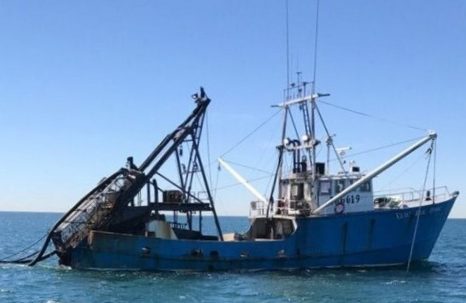
Coast Guard Medevacs fisherman knocked unconscious on 80-foot fishing vessel
A Coast Guard boatcrew medically evacuated a 48-year-old man who was knocked unconscious due to a fall on Sunday morning three miles south of Bellport Bay, New York. At approximately 8:30 a.m., watchstanders at Sector Long Island Sound received a distress call on channel-16 from the captain of an 80-foot fishing vessel (F/V New Sea Rover) stating a crewman aboard was found face-down and unconscious. A conference call was conducted with the on-call surgeon who recommended a medevac within a three hour window. The command center launched a rescue crew from Station Fire Island aboard a 47-foot Motor Life Boat at 9:15 a.m. West Islip EMS also came aboard to assist with the medevac. The boatcrew arrived on scene at 10:30 a.m. where the patient was transferred to the life boat. The crew arrived back at the station at approximately 12:15 p.m., where he was transferred to an ambulance and then on to Good Samaritan Hospital in West Islip, New York. The man’s current condition is unknown. USCG 15:06
New Louisiana state sales tax law takes area’s commercial fishermen by surprise
 The new schedule of items exempted from Louisiana sales taxes – and those which are not – includes loss of protection for people who buy antique airplanes and have other esoteric interests. But it also suspends, for now, the exemption on paying sales tax for commercial fishermen, on items like nets and other equipment essential to their trade. “Oh my God,” was the reaction offered by Trudy Luke of Houma, whose family buys crabs and seafood, and harvests the products as well.,, “Jay Morris doesn’t even know anything about the seafood industry nor does he care about Louisiana to do what he did,” said Kimberly Chauvin of the David Chauvin Seafood Company in Dulac, whose family also operates fishing vessels. “In my opinion, it’s time to let him know that we exist. I’m going to get all of his contact information. Then we need to flood his offices with emails and phone calls … We are one of the only industries that deal with the flood of imports year after year.” Click here to read the story 11:24
The new schedule of items exempted from Louisiana sales taxes – and those which are not – includes loss of protection for people who buy antique airplanes and have other esoteric interests. But it also suspends, for now, the exemption on paying sales tax for commercial fishermen, on items like nets and other equipment essential to their trade. “Oh my God,” was the reaction offered by Trudy Luke of Houma, whose family buys crabs and seafood, and harvests the products as well.,, “Jay Morris doesn’t even know anything about the seafood industry nor does he care about Louisiana to do what he did,” said Kimberly Chauvin of the David Chauvin Seafood Company in Dulac, whose family also operates fishing vessels. “In my opinion, it’s time to let him know that we exist. I’m going to get all of his contact information. Then we need to flood his offices with emails and phone calls … We are one of the only industries that deal with the flood of imports year after year.” Click here to read the story 11:24
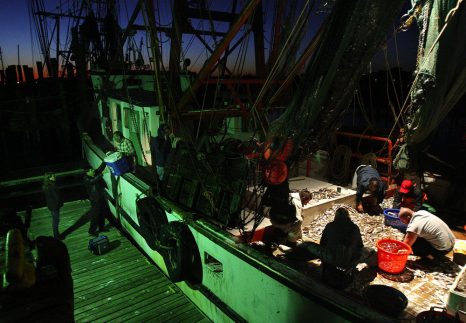
Where to find fresh South Carolina shrimp: ‘The more marsh, the more shrimp’
“Shrimp are more concentrated off inlets from which they come out,” said Mel Bell, fisheries director for the South Carolina Department of Natural Resources. Fresh shrimp could soon be ready for the cooker. The 2017 season is on the cusp of opening, and some boats already have catches in federally controlled ocean waters. Another good year of shrimping is forecast, mostly because more crustaceans survived the winter in relatively warmer waters. The DNR plans offshore sample trawls in the coming week after encouraging numbers of shrimp were found in previous inshore trawls. Outer state waters could be opened after that. Last year, the outer state waters — roughly two miles from shore — opened April 11. The nearshore waters, the heart of the shrimping grounds, opened a month later. Meanwhile, the federal waters farther out never did close over the winter and a few boats have continued to work them when the weather allows it. click here to read the story 10:42
Wildlife Conservation Society’s New York Aquarium wants Hudson Canyon National Marine Sanctuary designation
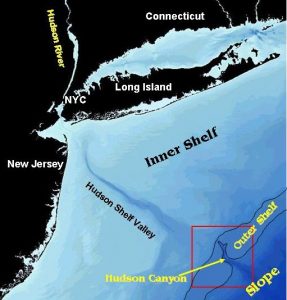 Fishermen not on board with Hudson Canyon Sanctuary – The Mid-Atlantic Fishery Management Council will hear a proposal from New York Aquarium, which has nominated the canyon for a National Marine Sanctuary designation. The sanctuary program is run by the National Oceanic and Atmospheric Administration. In the program’s 40 years of existence 13 national marine sanctuaries and two marine national monuments have been established. The sanctuaries are to be tailored to the needs of its stakeholders. (This does not include you, Fishermen) New Jersey fishermen however, are raising concerns that they will be shut out of a prolific fishing ground. “We’re in complete opposition. We’re not going to be fooled by the notion that the aquarium doesn’t intend to severely restrict fishing over time,” said Greg DiDomenico, Executive Director, Garden State Seafood Association. (We also oppose this) click here to read the story 09:48 Little-known-Underwater-Canyon-off-New-York-and-New-Jersey-Nominated-as-National-Marine-Sanctuary 09:58
Fishermen not on board with Hudson Canyon Sanctuary – The Mid-Atlantic Fishery Management Council will hear a proposal from New York Aquarium, which has nominated the canyon for a National Marine Sanctuary designation. The sanctuary program is run by the National Oceanic and Atmospheric Administration. In the program’s 40 years of existence 13 national marine sanctuaries and two marine national monuments have been established. The sanctuaries are to be tailored to the needs of its stakeholders. (This does not include you, Fishermen) New Jersey fishermen however, are raising concerns that they will be shut out of a prolific fishing ground. “We’re in complete opposition. We’re not going to be fooled by the notion that the aquarium doesn’t intend to severely restrict fishing over time,” said Greg DiDomenico, Executive Director, Garden State Seafood Association. (We also oppose this) click here to read the story 09:48 Little-known-Underwater-Canyon-off-New-York-and-New-Jersey-Nominated-as-National-Marine-Sanctuary 09:58
Snapper silliness still has anglers seeing red
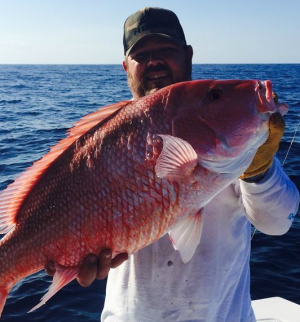 The bumper sticker on the white Ford pickup truck could not have been more clear: “National Marine Fisheries Service: Destroying Fishermen and Their Communities Since 1976!” Poignant. Harsh, even. But tame by today’s standards. The sticker made me think of an issue affecting offshore bottom fishermen who depart inlets between the Treasure Coast and South Carolina. I’m no mathematician, but something fishy is going on with red snapper statistics. Red snapper, a larger cousin of mutton snapper and mangrove snapper, resides in waters of the Gulf of Mexico and the Atlantic Ocean. It is presently off limits to harvest by east coast anglers, and has been since 2010. The reason? Because 10 years ago, fisheries statisticians determined that the red snapper fishery was “undergoing overfishing.” Along with “jumbo shrimp,” that expression is still one of my all-time favorite oxymorons. click to continue reading the story here 08:28
The bumper sticker on the white Ford pickup truck could not have been more clear: “National Marine Fisheries Service: Destroying Fishermen and Their Communities Since 1976!” Poignant. Harsh, even. But tame by today’s standards. The sticker made me think of an issue affecting offshore bottom fishermen who depart inlets between the Treasure Coast and South Carolina. I’m no mathematician, but something fishy is going on with red snapper statistics. Red snapper, a larger cousin of mutton snapper and mangrove snapper, resides in waters of the Gulf of Mexico and the Atlantic Ocean. It is presently off limits to harvest by east coast anglers, and has been since 2010. The reason? Because 10 years ago, fisheries statisticians determined that the red snapper fishery was “undergoing overfishing.” Along with “jumbo shrimp,” that expression is still one of my all-time favorite oxymorons. click to continue reading the story here 08:28
D.B. Pleschner: Study: No correlation between forage fish, predator populations
 On April 9-10, the Pacific Fishery Management Council is meeting in Sacramento to deliberate on anchovy management and decide on 2017 harvest limits for sardine, two prominent west coast forage fish. Extreme environmental groups like Oceana and Pew have plastered social media with allegations that the anchovy population has crashed, sardines are being overfished and fisheries should be curtailed, despite ample evidence to the contrary. Beyond multiple lines of recent evidence that both sardines and anchovy populations are increasing in the ocean, a new study published this week in the journal Fisheries Research finds that the abundance of these and other forage fish species is driven primarily by environmental cycles with little impact from fishing, and well-managed fisheries have a negligible impact on predators — such as larger fish, sea lions and seabirds. This finding flies directly in the face of previous assumptions prominent in a 2012 study commissioned by the Lenfest Ocean Program, funded by the Pew Charitable Trusts, heirs of Sun Oil Company. The Lenfest study concluded that forage fish are twice as valuable when left in the water to be eaten by predators and recommended slashing forage fishery catch rates by 50 to 80 percent. click here to continue reading the article 20:39
On April 9-10, the Pacific Fishery Management Council is meeting in Sacramento to deliberate on anchovy management and decide on 2017 harvest limits for sardine, two prominent west coast forage fish. Extreme environmental groups like Oceana and Pew have plastered social media with allegations that the anchovy population has crashed, sardines are being overfished and fisheries should be curtailed, despite ample evidence to the contrary. Beyond multiple lines of recent evidence that both sardines and anchovy populations are increasing in the ocean, a new study published this week in the journal Fisheries Research finds that the abundance of these and other forage fish species is driven primarily by environmental cycles with little impact from fishing, and well-managed fisheries have a negligible impact on predators — such as larger fish, sea lions and seabirds. This finding flies directly in the face of previous assumptions prominent in a 2012 study commissioned by the Lenfest Ocean Program, funded by the Pew Charitable Trusts, heirs of Sun Oil Company. The Lenfest study concluded that forage fish are twice as valuable when left in the water to be eaten by predators and recommended slashing forage fishery catch rates by 50 to 80 percent. click here to continue reading the article 20:39
Lobsters at core of a tasty China-US story
 Lobsters caught by fishermen on Little Cranberry Island in Maine in the United States in the morning can be had for dinner by Chinese families the next evening. The lobster and shrimp farming industry in Maine, which despite its history of more 150 years faced an uncertain future because of overcapacity, has been revitalized by Chinese consumers’ strong demand. That China-US interdependence in trade is based on win-win cooperation and mutual benefit is evident in the “lobster story”. The volume of China-US trade was less than $13 million in 1972, the year when bilateral ties started thawing thanks to then US president Richard Nixon’s visit to China. Last year, the bilateral trade volume reached nearly $520 billion. In 1979, when the two countries officially established diplomatic relations, Chinese people’s impression of US products was largely limited to a “foamy drink called Coca-Cola”. Click here to read the article 18:20
Lobsters caught by fishermen on Little Cranberry Island in Maine in the United States in the morning can be had for dinner by Chinese families the next evening. The lobster and shrimp farming industry in Maine, which despite its history of more 150 years faced an uncertain future because of overcapacity, has been revitalized by Chinese consumers’ strong demand. That China-US interdependence in trade is based on win-win cooperation and mutual benefit is evident in the “lobster story”. The volume of China-US trade was less than $13 million in 1972, the year when bilateral ties started thawing thanks to then US president Richard Nixon’s visit to China. Last year, the bilateral trade volume reached nearly $520 billion. In 1979, when the two countries officially established diplomatic relations, Chinese people’s impression of US products was largely limited to a “foamy drink called Coca-Cola”. Click here to read the article 18:20
Striper Poaching Season Begins in Maryland!
 On April 5, 2017, Maryland DNR reported that officers had charged nine men with possessing 87 striped bass from the waters of Dorchester County. On Saturday, an officer watched as four men caught striped bass and hid them in storm drains on Fishing Creek Bridge. The officer recovered 14 fish. Charged with possessing striped bass in a closed season were: Juan Manuel Bravo, 34, of Hyattsville; Emerson DeJesus Vargas Campos, 26, of Riverdale; Jairo Dario Ramierez, 22, of Upper Marlboro; and Elmer Antonio Castillo Araniva, 23, of Upper Marlboro. The next night, officers watched as five men from Prince George’s County caught fish and placed them in the trunk of an SUV. When officers stopped the vehicle and searched it, they found 73 striped bass in a duffel bag. There’s more! Lots more! continue reading the story here 17:03
On April 5, 2017, Maryland DNR reported that officers had charged nine men with possessing 87 striped bass from the waters of Dorchester County. On Saturday, an officer watched as four men caught striped bass and hid them in storm drains on Fishing Creek Bridge. The officer recovered 14 fish. Charged with possessing striped bass in a closed season were: Juan Manuel Bravo, 34, of Hyattsville; Emerson DeJesus Vargas Campos, 26, of Riverdale; Jairo Dario Ramierez, 22, of Upper Marlboro; and Elmer Antonio Castillo Araniva, 23, of Upper Marlboro. The next night, officers watched as five men from Prince George’s County caught fish and placed them in the trunk of an SUV. When officers stopped the vehicle and searched it, they found 73 striped bass in a duffel bag. There’s more! Lots more! continue reading the story here 17:03
North Pacific council takes first step in creating salmon fishery management plan
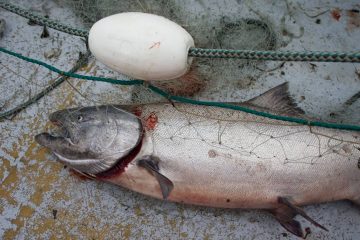 A lot of new faces are coming to the table at the North Pacific Fishery Management Council, and not a lot of them are happy about it. Fishermen who had never previously been involved with the council now have to show up to have a hand in how their fisheries will be incorporated into a federal fishery management plan. The council, which regulates federal fisheries off the coast of Alaska, on Thursday started in on the topic of the salmon plan for Cook Inlet, part of the Alaska Peninsula and part of Prince William Sound near Cordova. After removing the three areas from the plan by amendment in 2011, effectively exempting them from federal oversight and delegating entirely to the state despite occurring partially in federal waters, the U.S. Ninth Circuit Court ruled that the move was illegal. Now, the council is having to initiate the process of revising the salmon FMP to include the net areas, which is likely to take years. click to continue reading the article here 12:12
A lot of new faces are coming to the table at the North Pacific Fishery Management Council, and not a lot of them are happy about it. Fishermen who had never previously been involved with the council now have to show up to have a hand in how their fisheries will be incorporated into a federal fishery management plan. The council, which regulates federal fisheries off the coast of Alaska, on Thursday started in on the topic of the salmon plan for Cook Inlet, part of the Alaska Peninsula and part of Prince William Sound near Cordova. After removing the three areas from the plan by amendment in 2011, effectively exempting them from federal oversight and delegating entirely to the state despite occurring partially in federal waters, the U.S. Ninth Circuit Court ruled that the move was illegal. Now, the council is having to initiate the process of revising the salmon FMP to include the net areas, which is likely to take years. click to continue reading the article here 12:12
Wake Up, Fishermen! Proposed closure of coral grounds in Gulf of Maine has lobster industry on edge
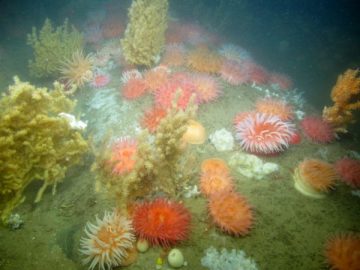 Over the past 10 years, the issue of how to protect endangered whales from getting tangled in fishing gear has been a driving factor in how lobstermen configure their gear and how much money they have to spend to comply with regulations. Now federal officials have cited the need to protect deep-sea corals in a proposal to close some areas to fishing — a proposal that, according to lobstermen, could pose a serious threat to how they ply their trade. “The [potential] financial impact is huge,” Jim Dow, a Bass Harbor lobsterman and board member with Maine Lobstermen’s Association, said Wednesday. “You’re talking a lot of the coast that is going to be affected by it.” The discovery in 2014 of deep-sea corals in the gulf, near Mount Desert Rock and along the Outer Schoodic Ridges, has prompted the New England Fisheries Management Council to consider making those area off-limits to fishing vessels in order to protect the coral from damage. According to Maine Department of Marine Resources, fishermen from at least 15 harbors in Hancock and Washington counties could be affected by the proposed closure. click here to read the story Wake Up, Fishermen! 11:15:30
Over the past 10 years, the issue of how to protect endangered whales from getting tangled in fishing gear has been a driving factor in how lobstermen configure their gear and how much money they have to spend to comply with regulations. Now federal officials have cited the need to protect deep-sea corals in a proposal to close some areas to fishing — a proposal that, according to lobstermen, could pose a serious threat to how they ply their trade. “The [potential] financial impact is huge,” Jim Dow, a Bass Harbor lobsterman and board member with Maine Lobstermen’s Association, said Wednesday. “You’re talking a lot of the coast that is going to be affected by it.” The discovery in 2014 of deep-sea corals in the gulf, near Mount Desert Rock and along the Outer Schoodic Ridges, has prompted the New England Fisheries Management Council to consider making those area off-limits to fishing vessels in order to protect the coral from damage. According to Maine Department of Marine Resources, fishermen from at least 15 harbors in Hancock and Washington counties could be affected by the proposed closure. click here to read the story Wake Up, Fishermen! 11:15:30
Adjacency – Shrimp fishermen storm DFO building, come away with signed agreement
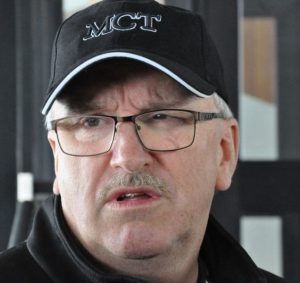 The protesters, members of the Newfoundland and Labrador Independent Fish Harvesters’ Association (NLIFHA), kicked in a window at the building’s main entrance, stormed the building and wandered the halls in search of specific staff familiar with shrimp science and fisheries management. At issue was not the shrimp quota, but the principles of adjacency surrounding the fishery in Area 6, specifically the 3K region on the province’s northeast coast and 2J off Labrador. Those closest to the resource, they argue, should have first access. “In these dire circumstances, while the shrimp is in the critical zone according to DFO scientists, we’re asking that the access to this shrimp only be given to people living adjacent to the shrimp,” explained Terry Ryan, a fisherman from La Scie and spokesman for the group of about 50. “All other fleets, including boats from Quebec, be denied access until such time as our shrimp recovers out of this critical zone.” Click here to read the story 10:25
The protesters, members of the Newfoundland and Labrador Independent Fish Harvesters’ Association (NLIFHA), kicked in a window at the building’s main entrance, stormed the building and wandered the halls in search of specific staff familiar with shrimp science and fisheries management. At issue was not the shrimp quota, but the principles of adjacency surrounding the fishery in Area 6, specifically the 3K region on the province’s northeast coast and 2J off Labrador. Those closest to the resource, they argue, should have first access. “In these dire circumstances, while the shrimp is in the critical zone according to DFO scientists, we’re asking that the access to this shrimp only be given to people living adjacent to the shrimp,” explained Terry Ryan, a fisherman from La Scie and spokesman for the group of about 50. “All other fleets, including boats from Quebec, be denied access until such time as our shrimp recovers out of this critical zone.” Click here to read the story 10:25
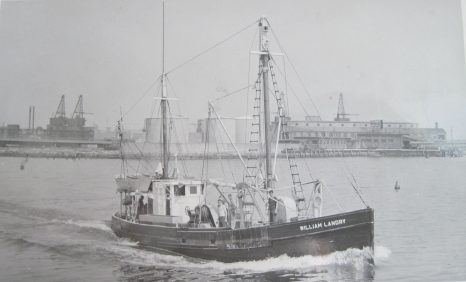
On This Day April 8,1950: Eight fishermen drown in sight of Lightship Pollock Rip
On this day in 1950, a fishing boat with eight men aboard sank with no survivors off Chatham after its crew struggled for hours to remain afloat in a howling gale. “The William Landry, a 63-foot scallop dragger out of New Bedford, was smashed to pieces by pounding seas while struggling toward a lightship stationed at Pollock Rip in Nantucket Sound,” the Associated Press reported. The Landry‘s fate became known for certain when wreckage from the boat washed ashore on Nantucket and was identified by LeRoy Anderson, brother-in-law of Capt. Arne Hansen, the Landry‘s 37-year-old skipper. The Coast Guard told the AP that the Landry vanished “all at once” around midnight after Hansen and his crew battled for hours in the fierce conditions to make their way to the lightship. When towering waves knocked the vessel’s pumps out of operation, the crew bailed with buckets and at 7 p.m. was near the lightship, the AP reported. click here to read the story More about F/V William Landry here 09:21
Two Vessels suspected of catching too many Monk fish are under investigation
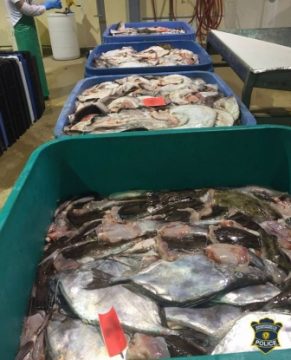 From the Massachusetts Environmental Police: On Wednesday, March 29, 2017, a Massachusetts Environmental Police Officer was on patrol in Saquatucket Harbor, an area that has recently received several fisheries complaints regarding vessels offloading catch that exceed the legal limit. While on patrol, the officer observed two vessels offloading monkfish. The Officer subsequently approached the vessel Captains and began the process of conducting an inspection of the catch offload. The inspection resulted in each vessel offloading catch over the legal limit; Vessel 1 was 1293 pounds over, Vessel 2 was 977 pounds over. The case has been turned over to the National Marine Fisheries Service for further investigation. The Massachusetts Environmental Police remain committed to providing quality and professional enforcement of conservation laws. Link 08:09
From the Massachusetts Environmental Police: On Wednesday, March 29, 2017, a Massachusetts Environmental Police Officer was on patrol in Saquatucket Harbor, an area that has recently received several fisheries complaints regarding vessels offloading catch that exceed the legal limit. While on patrol, the officer observed two vessels offloading monkfish. The Officer subsequently approached the vessel Captains and began the process of conducting an inspection of the catch offload. The inspection resulted in each vessel offloading catch over the legal limit; Vessel 1 was 1293 pounds over, Vessel 2 was 977 pounds over. The case has been turned over to the National Marine Fisheries Service for further investigation. The Massachusetts Environmental Police remain committed to providing quality and professional enforcement of conservation laws. Link 08:09
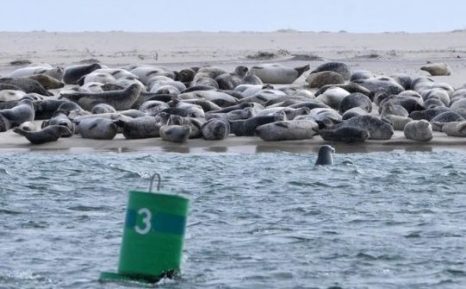
Cape Cod gray seal population estimated at up to 50K
While the first day of the U.S. Marine Mammal Commission’s annual meeting, held for the first time on Cape Cod, dealt with threats to a tiny Mexican porpoise and massive Arctic polar bears, Thursday’s sessions brought the focus home with a profoundly local subject: gray seals. “These animals are reassuming their ecological roles,” said David Johnston, an assistant professor at Duke University. “And people freak out.” Seals are back in force, with between 30,000 and 50,000 living in the waters of Southeastern Massachusetts, primarily on and around Cape Cod, according to a new estimate produced by Johnston to be published in an upcoming report. Feelings about their return, however, are decidedly mixed.,, “They are unprepared that these predators are back in their environment,” Johnston said about people, comparing the gray seal’s historic comeback to that of the reintroduction of the gray wolf in the Western U.S. (I hate these people!) continue reading the story here 19:43
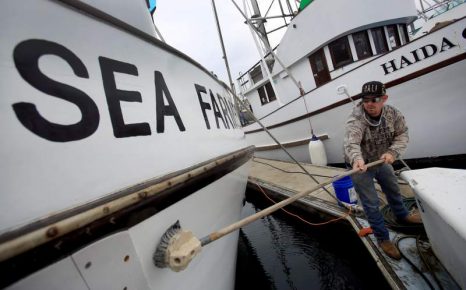
Bleak salmon season awaits commercial fleet as Bodega Bay Fishermen’s Festival returns
Bodega Bay will host its 44th annual Fisherman’s Festival this weekend, celebrating the ocean-going traditions that long supported this coastal village long reliant on its harvest from the sea. The two-day event, capped Sunday by the Blessing of the Fleet, coincides with the historic start of the salmon season, a catch still critical to the community’s prosperity. This year, however, like many in recent memory, commercial anglers on the North Coast await word of just how poor that king salmon harvest is expected to be. “It is bleak,” said veteran fisherman Dave Bitts, president of the Pacific Coast Federation of Fishermen’s Associations. “I’m referring to it as ‘scraps of a season.’” California’s salmon season has been troubled before. But this year the state’s historic drought has exacted what may be its steepest toll, decimating a generation of fish a few years ago in shrunken streams, with far fewer adults now showing up to spawn. Click here to read the story 17:05


































